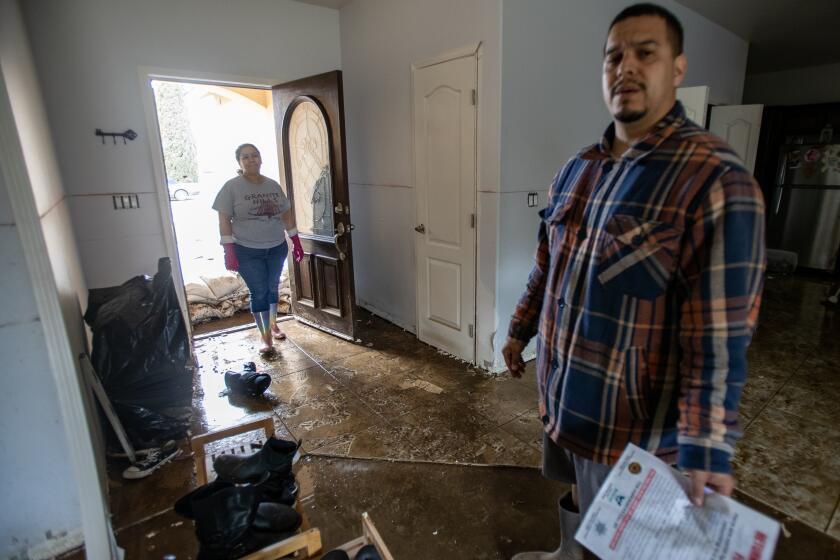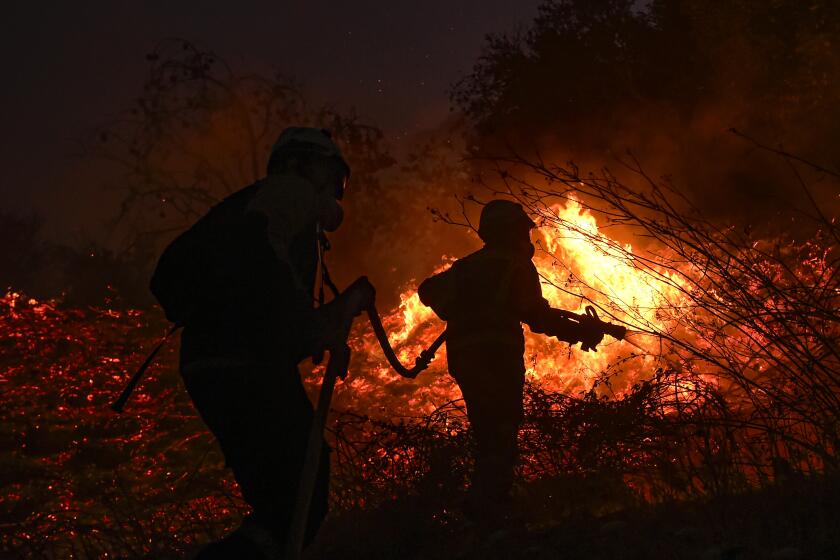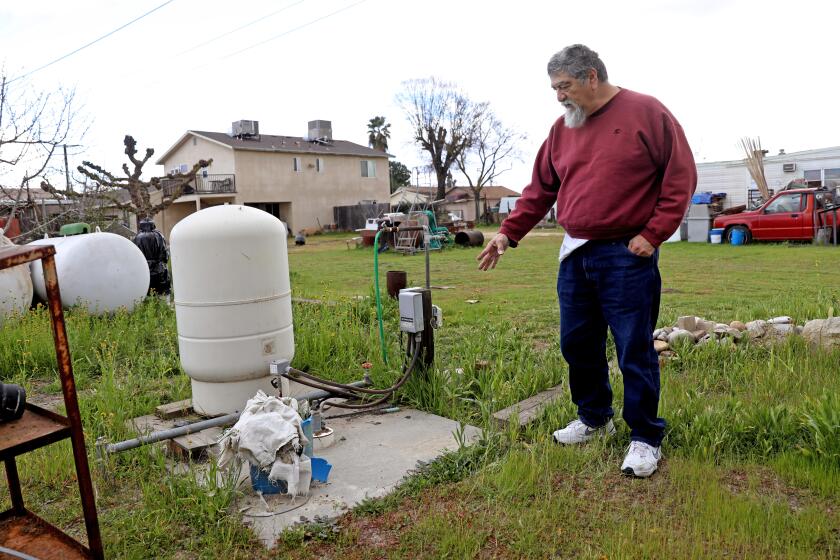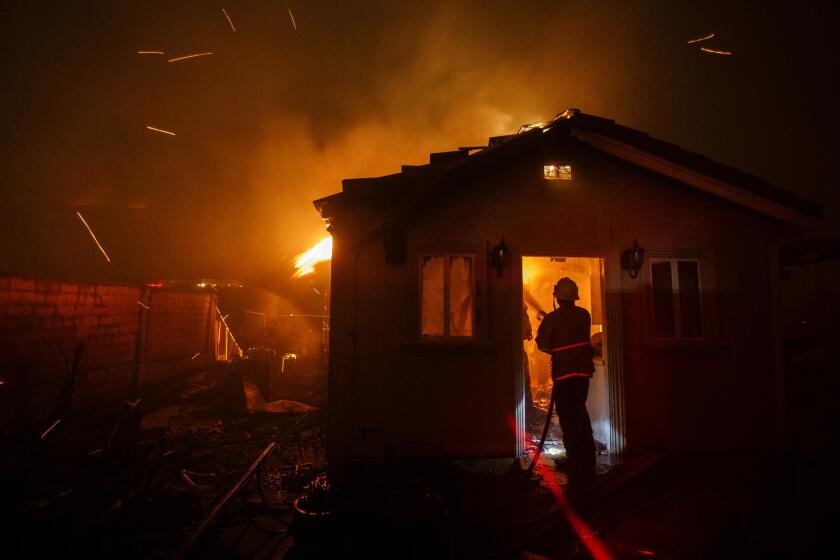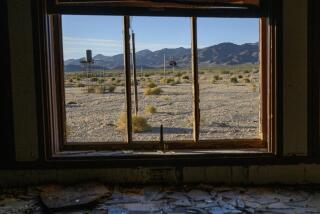
Humanity is on course to transgress multiple global “tipping points” that could lead to irreversible instability or the complete collapse of ecological and institutional systems, a United Nations report warned Wednesday.
The third annual Interconnected Disaster Risks report from the U.N. University’s Institute for Environment and Human Security in Bonn, Germany, found that drastic changes will occur if urgent actions are not taken around six moments when sociological systems are no longer able to buffer risks.
The tipping points include several issues that California is confronting head-on — groundwater depletion, rising insurance costs, extreme heat and species extinction. The other threats are melting glaciers and space debris. According to U.N. officials, “when one system tips, other systems may also be pushed over the edge.”
“The very practical consequence will be that much more people will live under very precarious conditions — so loss of life, loss of livelihood and loss of opportunities,” said Zita Sebesvari, deputy director at the U.N. University Institute and one of the lead authors of the report. “It does have cascading impacts.”
Aggressive and impactful reporting on climate change, the environment, health and science.
The tipping points are growing increasingly interconnected through global supply chains, trade and communications networks, the report says. Those links offer greater opportunity for cooperation, “but also expose us to greater risks and unpleasant surprises” from ripple effects when one element begins to crumble.
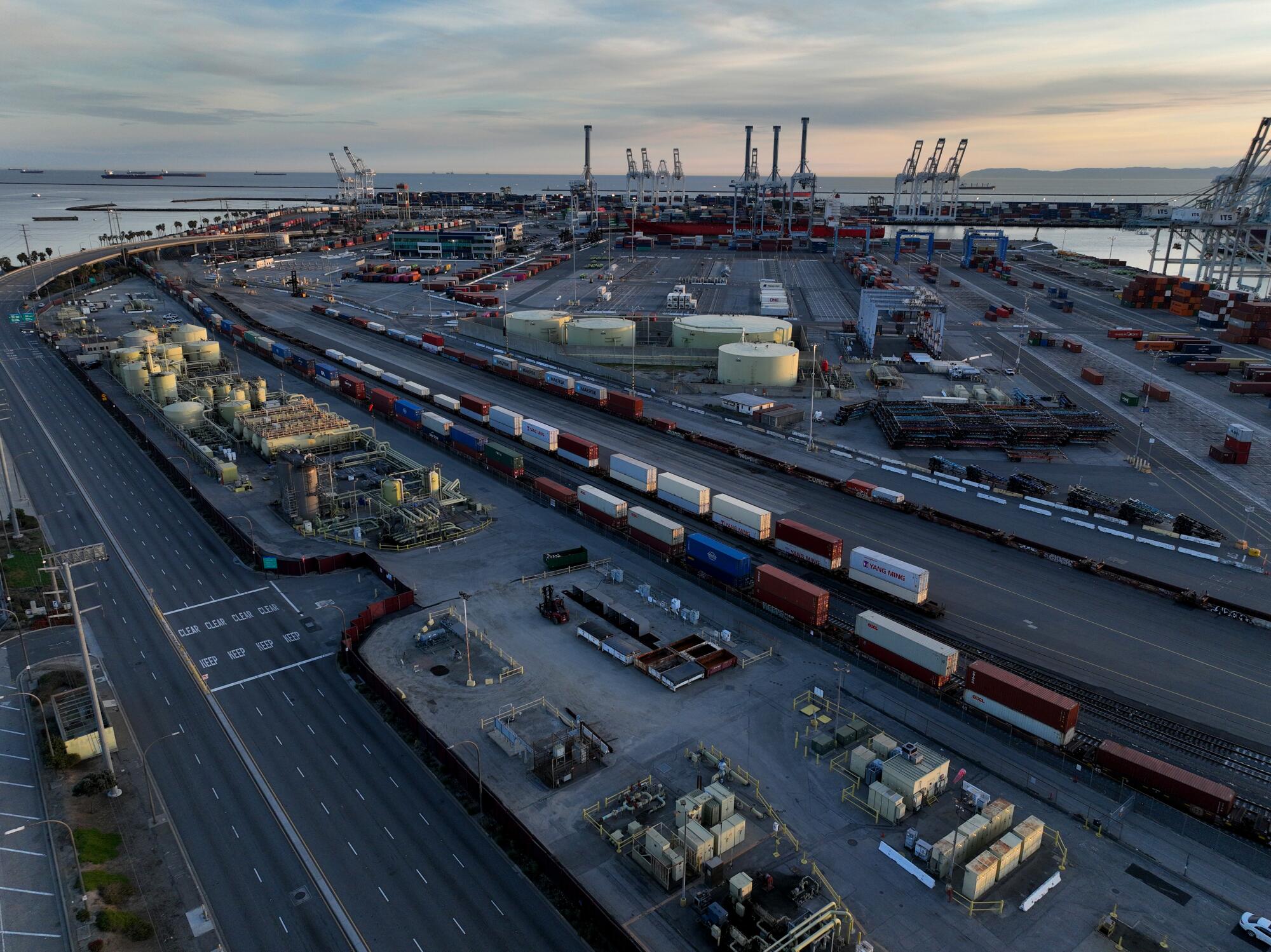
“We are moving perilously close to the brink of multiple risk tipping points,” the report says. The good news is that it is not too late to make changes to avoid or at least delay the worst possible outcomes.
Read more coverage
Dangerous floods, severe drought, extreme heat and polluted air have permanently altered life in California’s San Joaquin Valley. Can it adapt?
According to the analysis, groundwater depletion is one problem with major potential consequences. Roughly 2 billion people worldwide rely on groundwater as a primary source, but 21 of the world’s 37 largest aquifers are already being depleted faster than they can be replenished.
The tipping point for groundwater occurs when existing wells are not sufficient to reach the water table and access to groundwater becomes prohibitively expensive or problematic, the report says.
By that criterion, California is already on the cliff’s edge, as industrial agriculture and other uses are sapping supplies so quickly that more than 5,700 wells are currently dry and thousands more are at risk, according to state data. Groundwater depletion is also contributing to land subsidence, with some areas sinking as quickly as 1 foot per year.
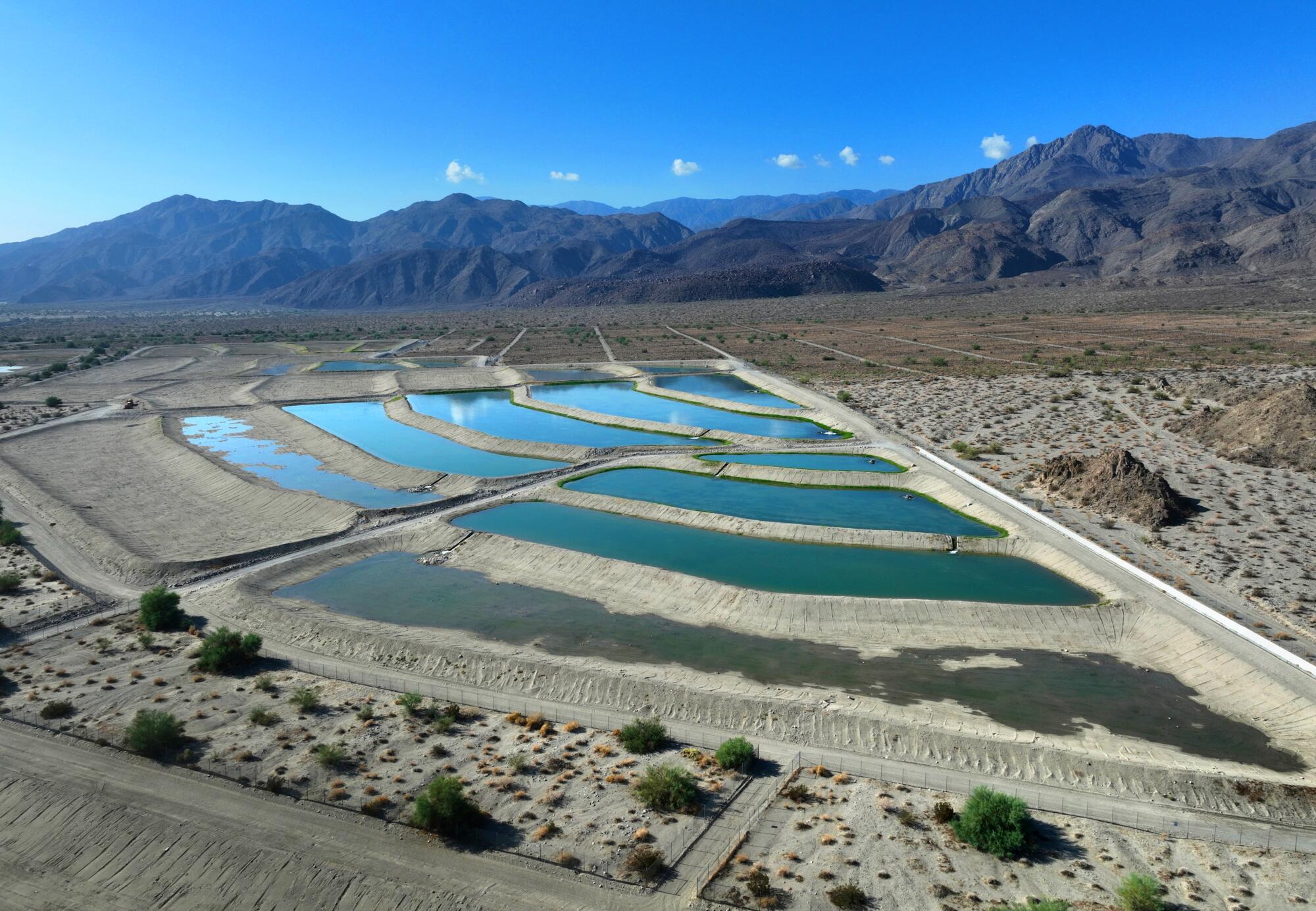
Surpassing the tipping point could have dire consequences not just for local communities but for global food production, the report says. In California, officials are attempting to rectify this through the Sustainable Groundwater Management Act — a landmark piece of legislation that seeks to limit groundwater use, but with a timeline for implementation that could take decades.
“The long-term vision is to balance out the infiltration and recharging of groundwater with the taking out of groundwater,” Sebesvari said. “At least California does have a management plan, which is quite outstanding, I must say, because many places in this group don’t have that.”
Global surface temperatures last month were 2.25 degrees above the 20th century average of 60.1 degrees, surpassing the record set in August 2016.
But groundwater is only one of a handful of tipping points facing California and the globe. Unbearable heat driven by climate change is also an element of concern. The U.N. report estimates that roughly 500,000 excess deaths were attributed to extreme heat annually between 2000 and 2019, and that 30% of the global population is exposed to deadly heat conditions at least 20 days per year.
This year, the planet experienced its hottest summer on record, with global surface temperatures in August 2.25 degrees above the 20th century average. Simultaneous heat waves plagued Europe, China and the Southwest, where Phoenix experienced a record 31 consecutive days of temperatures at or above 110 degrees.
Sebesvari said extreme heat is one area where adaptation, as opposed to mitigation, may be warranted, since places such as Pakistan and parts of India are regularly surpassing the threshold for livability. In Los Angeles, officials are already exploring adaptation measures such as the installation of cool pavement, the planting of trees and a possible city mandate requiring air conditioning in all rental units.
Meanwhile, Californians continue to face the looming threat of un-insurability. That tipping point will occur when the cost of hazards becomes so high that insurance is no longer accessible or affordable, leaving people without an economic safety net when disaster strikes.

California came perilously close to that point earlier this year when insurance giants State Farm, Allstate and USAA pulled out of the state, citing rising wildfire risks and other mounting threats.
Researchers examined plans for managing groundwater in the Central Valley. They found local plans leave thousands of wells at risk of running dry.
In September, Insurance Commissioner Ricardo Lara struck a deal to bring them back to California in exchange for a number of concessions, including the possibility of much higher premiums.
But the fix only served to underscore a burgeoning global crisis spurred by a sevenfold increase in the cost of disasters globally since the 1970s, according to the U.N. report. Last year, global economic losses from disasters totaled $313 billion.
Insurers agreed to return to the high-risk fire zones in the hills and canyons of California in exchange for concessions that will make it easier for them to get rate increases approved.
The report arrives just weeks ahead of COP28 — an annual international climate conference that will be held in Dubai — and in the wake of the scorching summer that spurred dire warnings from scientists about the worsening effects of climate change.
It also echoes a major study published in September in the journal Science Advances, which found that the planet has crossed six of nine boundaries that suggest “Earth is now well outside of the safe operating space for humanity.”
While the U.N. report is largely focused on irreversible socioeconomic tipping points, the Science Advances study examined planetary systems such as ozone depletion and ocean acidification that are mostly reversible, but could alter living conditions on Earth if pushed far enough, according to Katherine Richardson, the study’s lead author.
Though the findings are distinct, Richardson said she agreed with the U.N.’s assessment. Its framework is “likely a better way to communicate the urgency of the existential crisis we have created for ourselves as it can directly be translated to people’s immediate condition and wealth,” she said.
In addition to groundwater depletion, rising insurance costs and extreme heat, the U.N. report highlights melting glaciers, ecosystem collapse and space debris as systems nearing precipices.
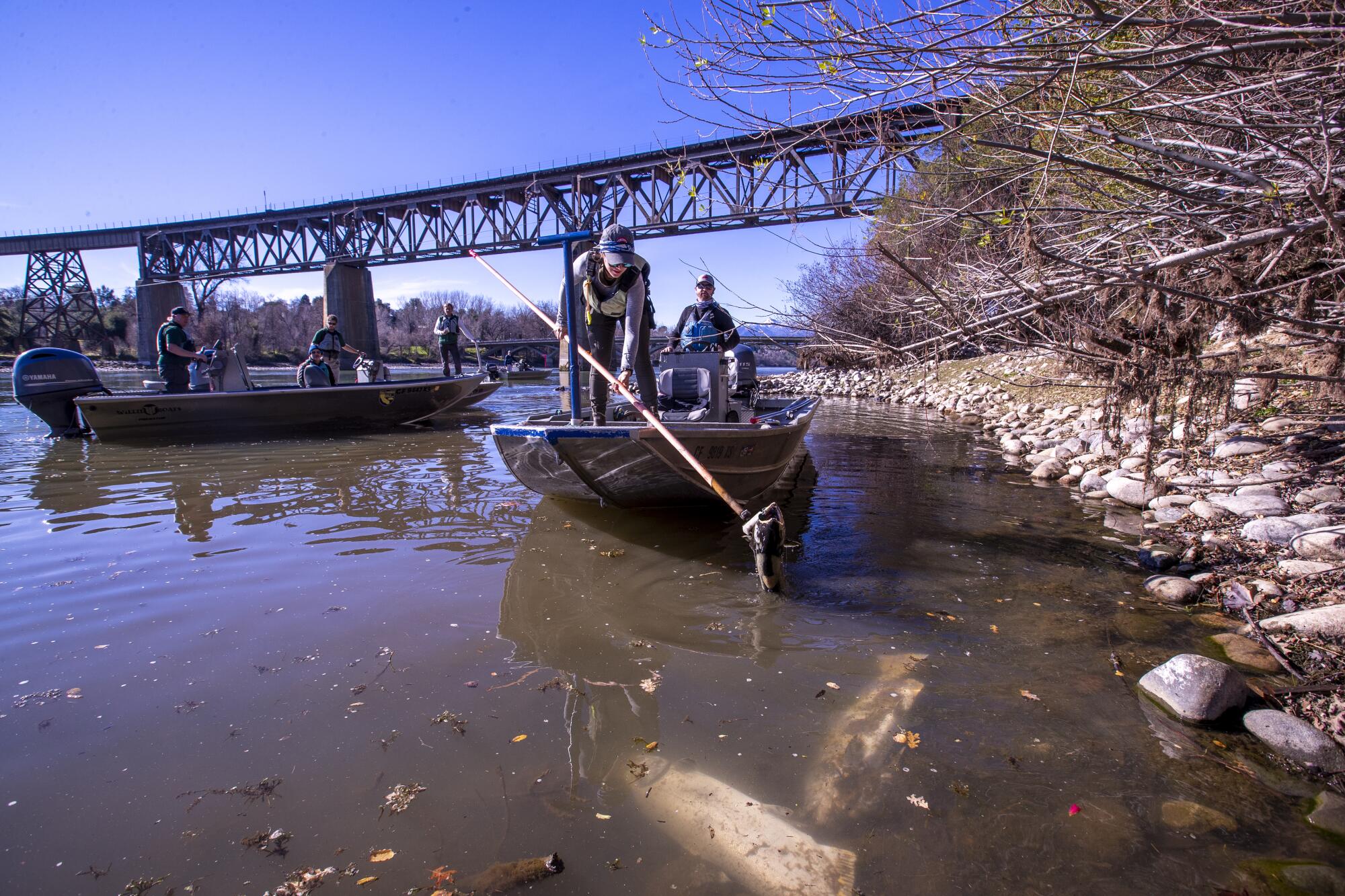
This summer, global sea ice coverage reached a record low — about 550,000 square miles less than the previous low set in August 2019, according to the National Oceanic and Atmospheric Administration. The continued melting of ice and glaciers driven by human-caused global warming will have negative effects on freshwater availability for humans and other species, the U.N. report says.
Ecosystem collapse is similarly underway, with accelerating extinctions driven by land use changes, climate change, pollution and invasive species.
More than 400 vertebrate species have gone extinct in the last 100 years, and nearly a million plant and animal species are currently threatened with extinction, the U.N. report says. That includes several California species such as Delta smelt, Chinook salmon, California condors, gray wolves and mountain lions. California trees are also dying at a record pace due to drought, wildfires, bark beetle infestation and other threats.
Earlier this month, the U.S. Fish and Wildlife Service removed 21 species from the U.S. Endangered Species Act due to extinction, including a fruit bat, two types of fish, eight types of mussels and 10 birds.
There are only 13 red wolves in the wild. But in North Carolina, where wildlife experts hope to save the species, many landowners see them as a nuisance.
Finally, there is space debris — the only non-terrestrial threat outlined in the report. There are roughly 8,300 satellites in orbit and nearly 35,000 other tracked objects circling the Earth. Many are used for global communications, early warning systems, weather monitoring and other purposes that help connect people and reduce disaster risk.
A tipping point will occur when there is such a critical density of objects in orbit that one collision could set off a chain reaction and take those systems offline, the report says.
Though there has been a push for space to be seen as a “global commons,” no such international agreement has been reached. (In fact, then-President Trump in 2020 issued a statement saying that the United States “does not view space as a global commons.”)
While each tipping point is a potential threat in and of itself, the interconnection between them is key to the report, according to Jack O’Connor, senior expert at the U.N. University Institute and one of the lead authors. He likened the systems to towers of wooden blocks, like in the game Jenga.
“We and our behaviors are slowly removing pieces one by one from the base, until at some point the system can no longer cope with the growing instability and it collapses,” O’Connor told reporters Wednesday.
He and other officials said their hope is that policymakers, world leaders and the public will factor the findings into decisions moving forward in order to prevent a worst-case scenario. It is important to consider the rights and opportunities of future generations in current planning processes, they said.
“Our report is not saying that we are doomed to cross these risk tipping points, but rather it’s supposed to empower us to see the paths that we have ahead of us, and to take steps toward a better future,” O’Connor said. “We are still driving the car. And we still have a choice.”
Toward a more sustainable California
Get Boiling Point, our newsletter exploring climate change, energy and the environment, and become part of the conversation — and the solution.
You may occasionally receive promotional content from the Los Angeles Times.

